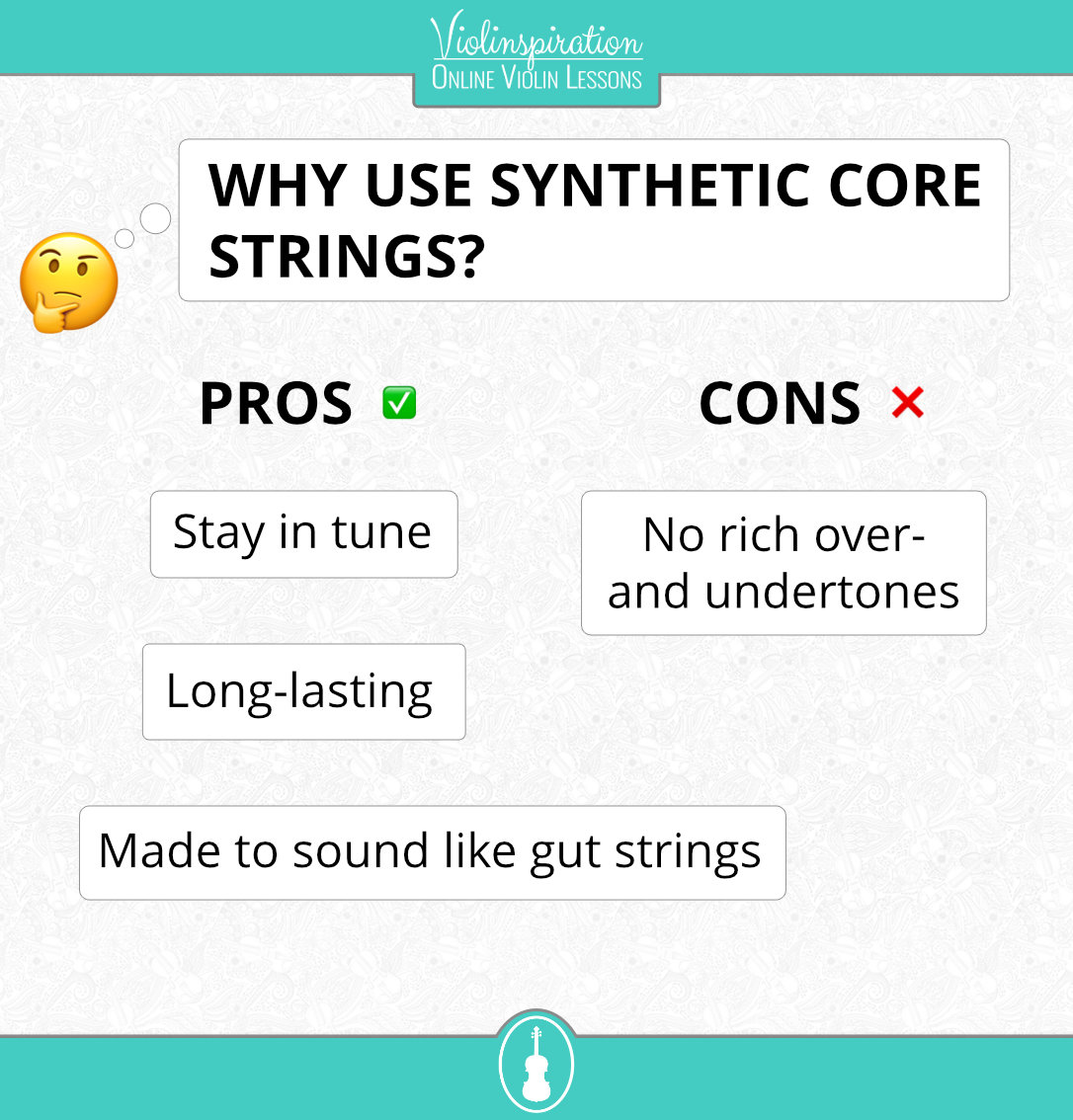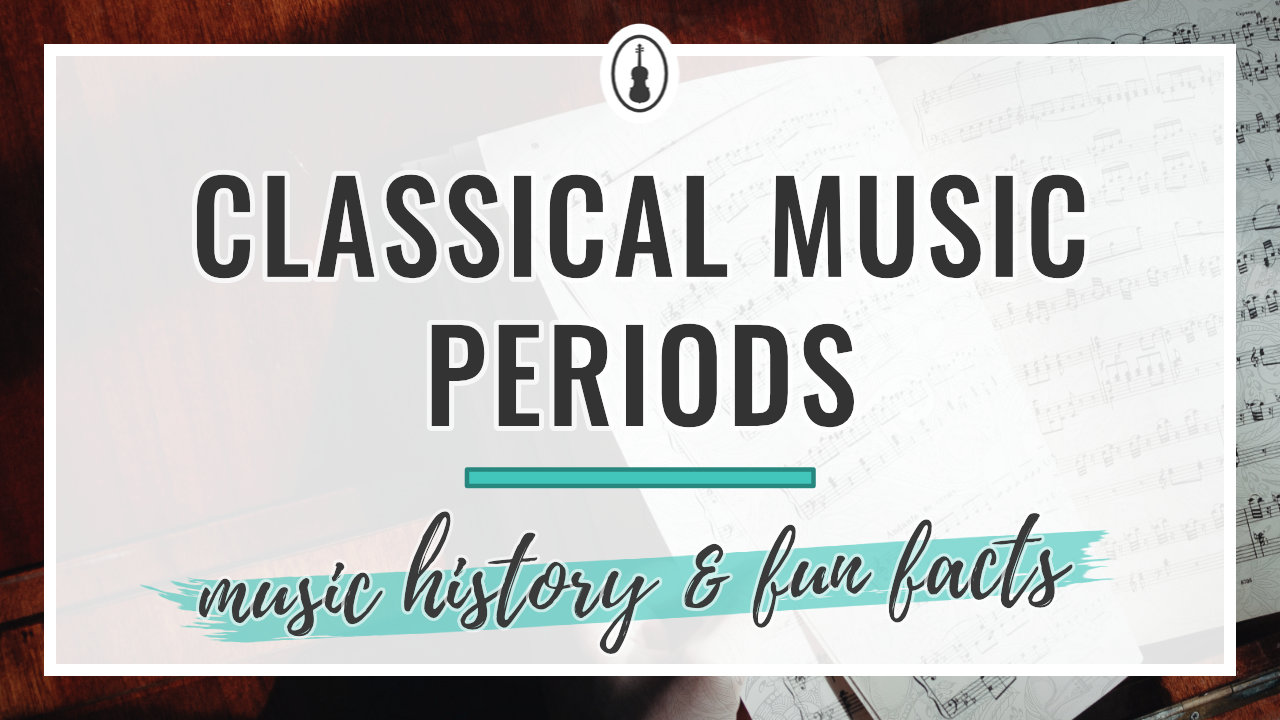
Usually, beginner instruments come with steel core strings as part of their set-up because they more easily stay in tune. This is very important as you start to learn violin techniques. But, as you find yourself advancing, you may want to consider upgrading your violin strings to change the tone you get out of your instrument.
Violin strings affect the overall sound of your instrument, separate from your technique. All violins are different and therefore have different tonal characteristics. The strings do matter when trying to find your violin’s true voice. But, to say this string or that string is the best violin string would be untrue. You have to find the perfect match for you as the player, and your violin.
How Do You Decide What Violin Strings to Buy?
In this article, I have put together a list of six things to consider when buying new strings that will help you find the best violin strings to compliment your instrument and your playing style:
- Establish a basic understanding of the different types of strings
- Learn how tension and gauge affect string performance
- Consider your style of music
- Think about your playing ability
- Assess your tonal wants and needs
- Consider the cost
Types of Violin Strings
Before you dive down the rabbit hole in your hunt for the perfect strings, it is important to establish a basic understanding of the different types of strings available for you to choose from. So that is where we will start our discussion.
Gut Strings
Gut strings are made from sheep intestines exclusively; experiments from other animals show the fibrous structure of gut from young prairie sheep is the most suitable for the making of strings. This is because when they are between the ages of six to eight months old, the smooth gut lining of the prairie sheep is strong, yet very soft.
Gut strings have a lower tension and are slower to respond when you play than either steel core or synthetic core strings. Therefore, they are mostly used by professionals or those with excellent technique because they require expertise to play. Those who prefer to use these strings feel the tone they produce outweigh the difficulty in using them, as you can see in the chart below.

Steel Core Strings
Steel core strings are a great beginner string set found on many student violins because they stay in tune very easily. But, that is not the only place you will find them. Their steel core responds quickly compared to gut strings, and produces a clear and bright sound. Therefore, many jazz, bluegrass, fiddle, and rock musicians use steel core strings.
You can see in our pros and cons chart below how different they are to the gut core strings.

Synthetic Core Strings
Synthetic core strings were invented by the Thomastik-Infeld company of Austria, since they first introduced their Dominant string set almost 40 years ago. They have most recently introduced the Dominant Pro string set.
The Dominant string core is made of Perlon, or Nylon 6 as it is also known.
The synthetic core in these strings provides musicians with the warm tonal colors of gut strings, with the stability and playability of steel core strings. A perfect union that has changed violin playing forever.
Since then, many brands have created strings using a variety of synthetic materials in their search for complex overtones and sound.

Violin Strings – Tension and Gauge

String gauge is the thickness in diameter of the string.
The tension of a string is the horizontal force needed to get the string to the right length to vibrate and sound a certain pitch – meaning how hard it is to stretch it, to get it in tune.
The two are important to consider when choosing new strings. Thicker gauge strings not only sound different from both medium and thin but may also feel harder on your fingers when pressing down on them.
Thick Gauge
Thicker gauge strings require more tension to tune to the correct pitch and therefore respond a bit slowly. They have a round, robust, and colorful sound.
Medium Gauge
Medium gauge strings are the most popular gauge string among violin players. This is because it is easy to stretch them to pitch, they produce a nice balanced tone on most instruments, and are more responsive when you bow.
Thin Gauge
Thin violin strings require less tension to stretch the string to correct pitch. They have a very bright sound and are quick to respond.
Violin Music Style
Different music styles require different strings. Decide what you like to play most, and choose strings accordingly. Classical musicians usually prefer to play on gut or synthetic core, while those who play jazz and fiddle tunes sometimes play with steel core because of their brightness in sound.
Violin String Response
When you are deciding on your next set of violin strings, it is important to honestly consider your playing ability.
If you are a beginner new to technique, and working on intonation, it is very important for your strings to stay in tune and to respond easily when you bow. This will allow you the freedom to focus on what is important, and that is learning to play your instrument, without having to always stop and tune your violin.
Additionally, having your violin stay in tune while you are learning intonation and developing muscle memory is important because if your violin is out of tune, your ears will learn the improper pitch as if it is correct. Your fingers will learn the incorrect position on the fingerboard, so when your instrument is in tune, you may find yourself playing out of tune. Then you will have to unlearn these bad habits, and relearn correctly all over again! This can be very discouraging for beginner students. Steel core strings would be a great choice for this reason.
If you are a more advanced player in your technique, you might want to try gut strings. They are slower to respond and require more finesse, but the warm tonal colors they bring out of a violin sound heavenly.
The response of a synthetic core string can suit most advanced beginners up to and including professional players. They are very easy to play on and sound great on most violins.
Warm Tone Vs Brilliant Tone
Different brands of strings from different companies are made to bring out different tonal qualities: warm tones, brilliant tones, and a myriad in between.
What Is the Tone on a Violin?
Simply put, the tone produced from a violin is the quality of the sound that comes from it. Its musical voice, so to speak. It starts with the violin itself. But you can certainly add your influence into creating the tone as well. One way to do this is by using different violin strings.
Cost of Violin String Sets
The price of violin strings varies in range, so it is helpful to give yourself a budget.
Many of the top brands, such as D’Addario, Pirastro, and Thomastik-Infeld, have a line of strings at different price points. Deciding what you want to spend and finding the strings that fit your needs in your price range is a great way to experiment with trying out new strings.
Smaller Budget String Set
If you have a smaller budget, Pirastro Tonica strings are a great value for their price point. Their synthetic core allows them to be pretty neutral in tone and brightness, so they sound great on almost any violin.
You can usually find them for under 30 euros or 30 – 40 US dollars.

Pirastro Tonica
Support us for more FREE content No extra costs for you Recommended by Violinists
Medium Budget String Set
If you have a slightly larger budget, Dominant strings by Thomastik-Infeld are a great mid-range price neutral string – meaning not too bright, or warm, and with a great response time. You can usually find a set for around 40 euros or ca. 50 US dollars, give or take.

Thomastik-Infeld Dominant
Support us for more FREE content No extra costs for you Recommended by Violinists
$100 Budget Violin Strings
For under a hundred dollars (ca. 80 euros), you can get a nice set of Evah Pirazzi strings by Pirastro.
Evah Pirazzi leads the pack in professional-grade orchestral strings and is recommended for solo players as well. They produce an intense and brilliant sound, allowing for a wide dynamic range.

Pirastro Evah Pirazzi
Support us for more FREE content No extra costs for you Recommended by Violinists
Thomastik-Infeld has met the request of top-class, international musicians who continually asked them to create a set of strings similar to their Dominant strings, but better, by expanding on their existing qualities. Their answer was the creation of Dominant Pro strings.
You can find them for around $100 or 80 euros.

Thomastik-Infeld Dominant Pro
Support us for more FREE content No extra costs for you Recommended by Violinists
Can You Combine Violin Strings?
Yes, you can combine strings, and often, you will hear this is encouraged. Sometimes players will use a different string for the higher E string from what they use on the other three because they are looking for more projection, while at the same time looking to limit the shrill tone that can often be heard on the higher-pitched string.
I’ve heard some pros do it, and they choose the perfect string for each tone.
This is a personal choice based on how they feel their instruments will sound best. You may like it for your violin as well.
When Should I Change Violin Strings?
There is no specific answer to this question because it depends on how often you play your violin.
You should change your strings when there is natural wear on the strings that comes from constant stretching when tuning your instrument, and the friction when you bow. But, the sweat and oil from your hands wear them down just as much, if not more.
Dirt, dust, and rosin build-up also factor in, making the answer even more difficult.
The general rule, though, is that if you play from one to three hours a day, a brand new set of strings should last at least six months, if not more, before they should be changed.
Signs That Tell You It’s Time to Change Strings
Though there is no specific answer as to when to change your strings, there are certain signs that indicate a change is suitable. They would include:
- A change in sound that you hear to be too tinny, dull, or flat.
- Your strings feeling less responsive, causing you to work harder to pull off a certain bow technique.
- The strings beginning to slip out of tune more frequently, or sound off the pitch when they are in tune.
- You seeing the string begin to unravel, usually near the bridge or the nut.
To Sum Up
A search for the best violin strings for your instrument can be time-consuming and costly. What sounds lovely on one instrument might not sound the same on another, since all violins have a different voice and different tonal colors. Therefore, educating yourself on the different kinds and types of strings, and knowing what you’re looking for and how you want your instrument to sound can help narrow down the search, saving you time and money.























